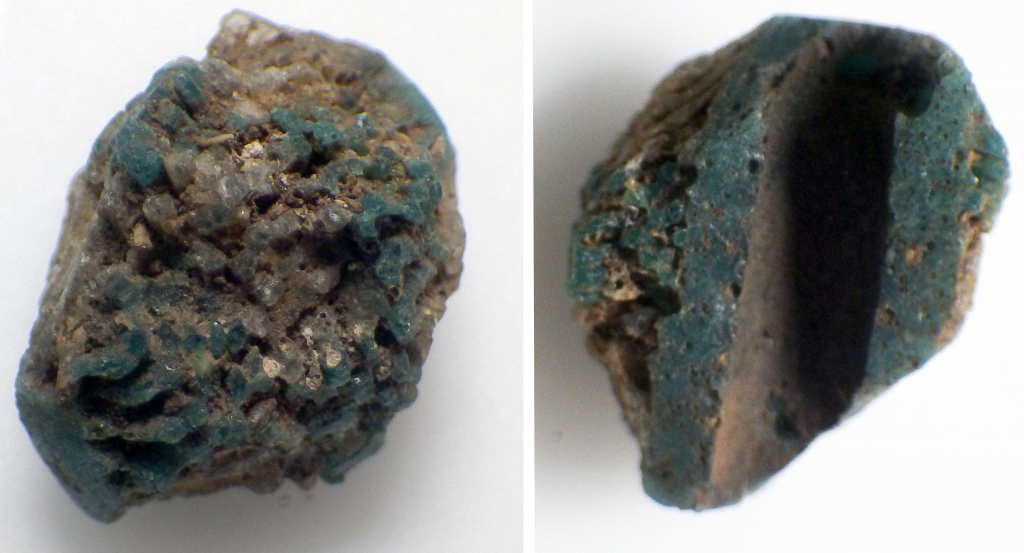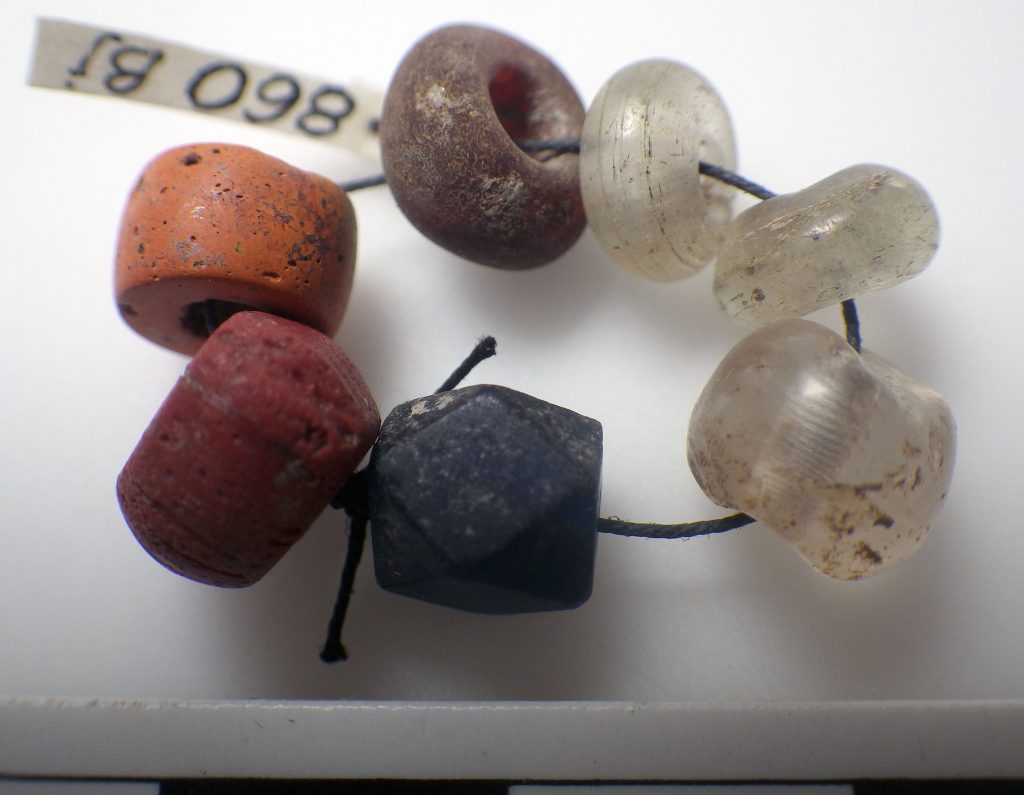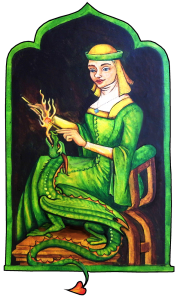Yesterday I spent another day in the basement of SHM, I have mostly taken oversight pictures and a lot of measurements that may not be to interesting for anybody else at this stage; however I did see some other things that may be noteworthy.
First; we found those missing fragments from Go Lye (the place on Gotland from my last visit). They have their own little box and are registered as another object.
They are quite extraordinary and we can start by saying that they are fragments of at least three beads, not two.
The first bead-individual is the core of a mosaic bead, it has had a chequered pattern but all but the emerald green parts have deteriorated. Since this bead is split we can see the cross-section, and it seems the mosaic has been applied to a core of the same emerald glass.
This brings us to the next bead. In the previous beads from this site we have seen examples where the mosaic sheet is applied to a core of a different colour.
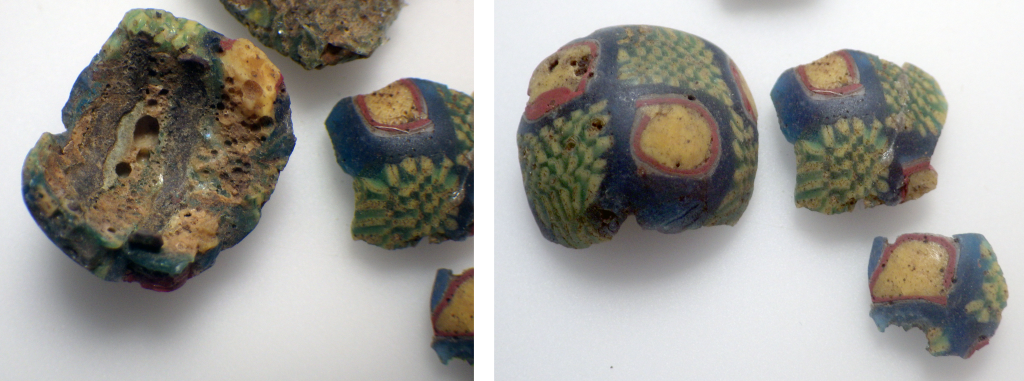
From SHM 8315, framentary outer layer of a bead with mosaic decoration. The core may have been of incompatible glass and have not been found.
That is most probably what our next two beads have had at one point. The cores do not seem to have been found, but it is an old find from a ditch-digger so that is not strange.
The last fragmented bead is quite similar but larger and more colorful.
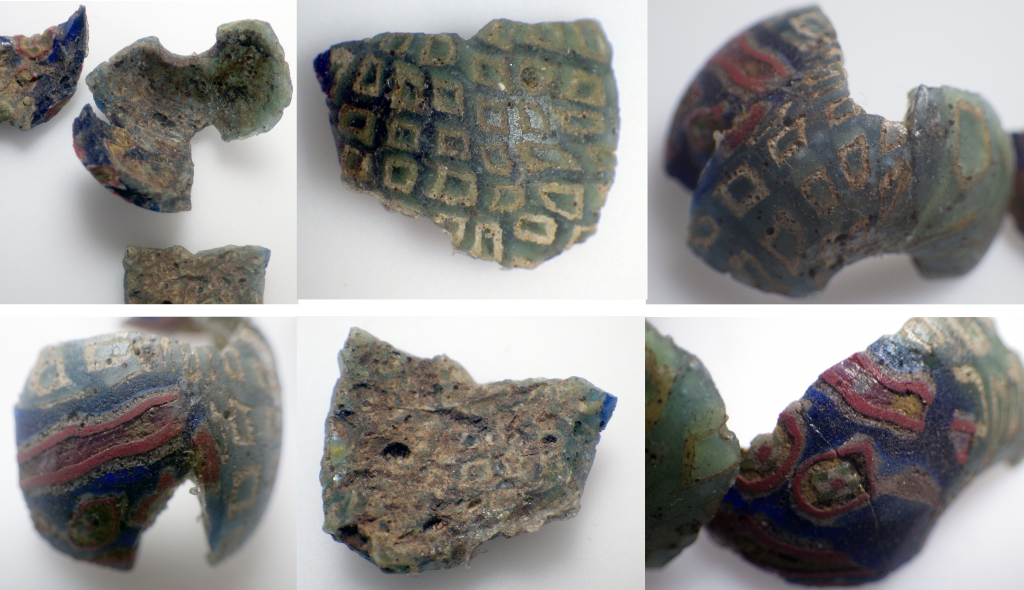
From SHM 8315, framentary outer layer of a bead with mosaic decoration. Note the thin wall, about 1-2 mm.
The mosaic beads are made from a premade mosaic sheet that is wrapped around the mandrel. (usually without a core underneath) The idea to use a core of solid glass is attractive since any solid colour is cheaper in labour than the mosaic sheet. A modern bead maker may do this with clear (the act of clear-core) and historical beadmakers sometimes used clear cored rods when working in some colors (mostly Red (O) ). However, in this case the bead has either not fused enough or the core was made in an incompatible glass. (if you are confused by that check this page about COE). What has been found is the shell-like mosaic layer of the bead. This shell is surprisingly thin, and one must reflect if it was fused in a closed mould since it is thinner than glass will usually form in a full fuse. (surface tension will usually make glass attempt to become a thickness of about 4 mm)
I also took a few pictures of some beads from Birka. They are not part of my research right now but they are interesting and happened to pass by me by pure coincidence.
This is a small group of beads from Birka grave 860 (the Bj on the little note stands or Björkö, the island where Birka was located) One bead is made from mountain crystal (the larger of the clear ones) one is of amber (the top brownish one) and the cuboctahedrical one is made from Lapis Lazuli. They are interesting since stone beads are not very common in the Viking period (usually less than 5 % of the total amount of beads on a site). The Lapis ones have often been mistaken for glass since there is a lot of blue cuboctahedrical glass beads in the Vendel and early Viking period.
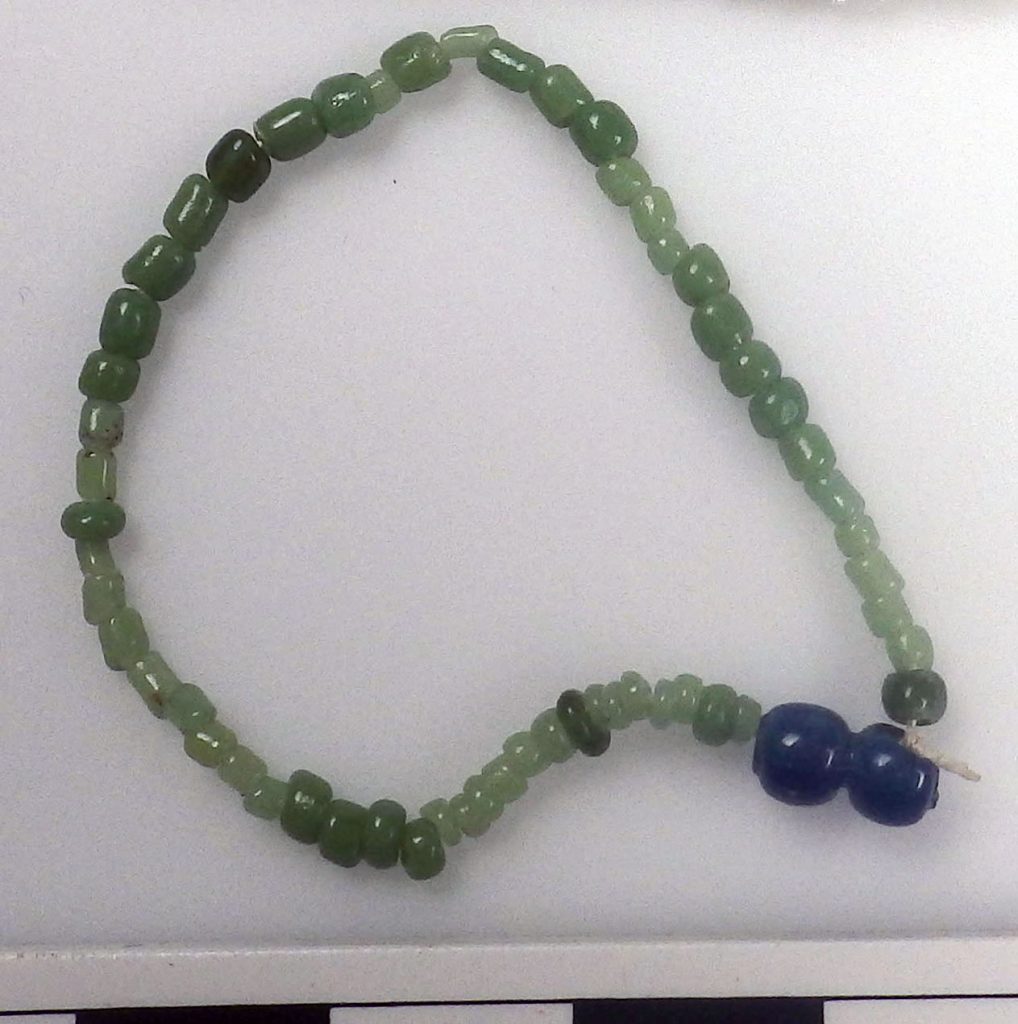
Birka grave 642, microbeads and one segmented bead. All made from drawn tubes. Centimeter scale at the bottom.
Then we have this little group from Birka grave 642. The green ones are cut-drawn microbeads (made from a blown tube) and a quite rare find, usually they slip through the digging methods, so we can’t quite be sure how common they were. I do however have a few deteriorated examples of similar beads from Britain in my masters so they are not to uncommon.
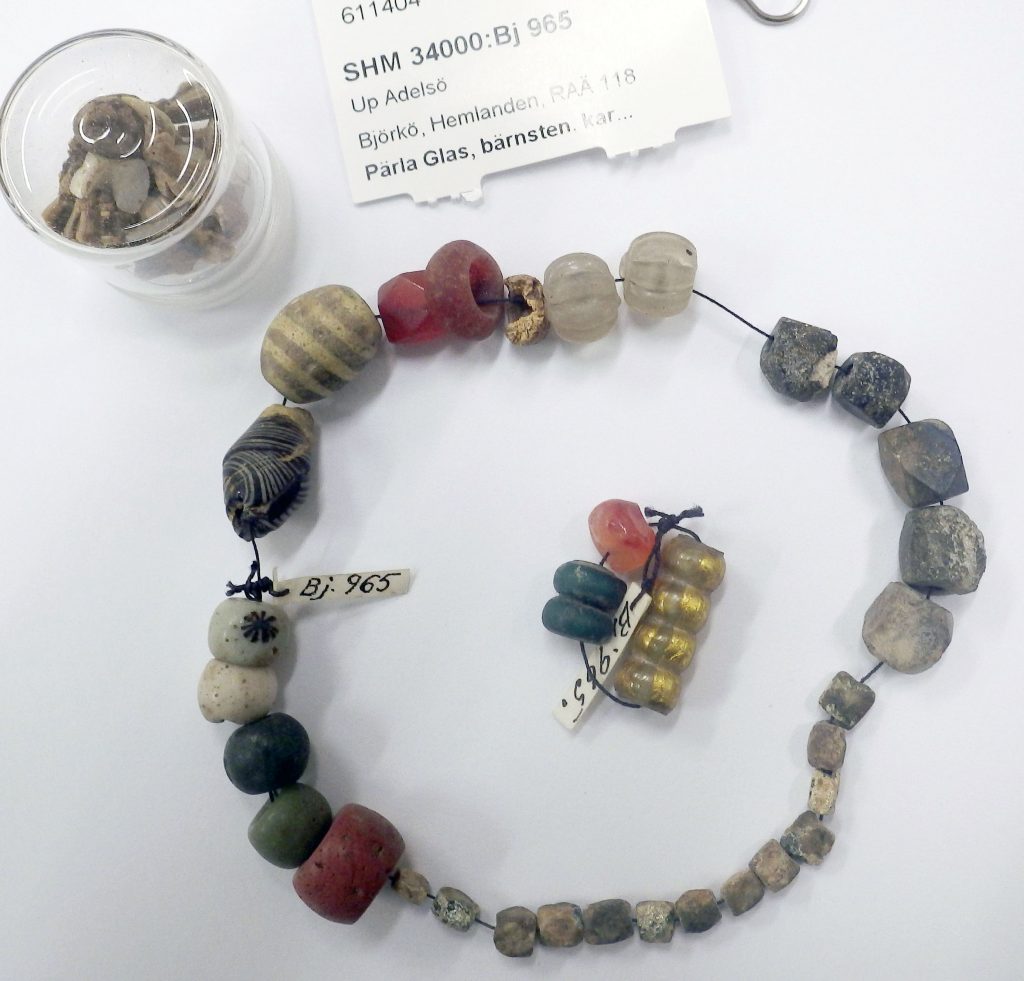
Beads from Birka grave 965, Lapis Lazuli (18), carnelian (2), one made from unidentified organic material, the rest glass, including one segmented foiled bead. In the little jar fragments of beads from glass and organic material.
And lastly these beads from Birka grave 965, its another quite interesting assemblage. I wont go into context since that is not part of my research at this stage, however, I will probably at some point go into the cuboctahedrical shape (here, again seen in Beads of Lapis Lazuli) and its connection to trade and payment in the Viking culture.

Closeup of the Zebra bead from Birka grave 965. It has lost one of its yellow endcaps but is still a very nice bead.
And then there was something else, an object that I want to be able to present more complete research about before tell that story. But it is a mosaic sheet. Most probably material for the making of beads similar to these fragments from Lye, rather than a complete object in itself. This is an object type that I knew must have existed but had never seen an example of in the material and that is very interesting.

